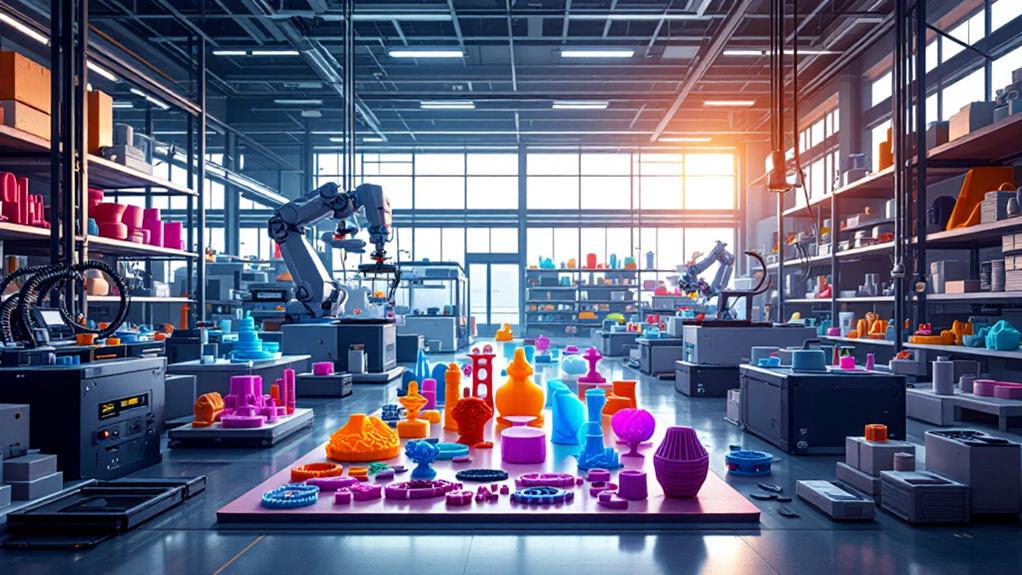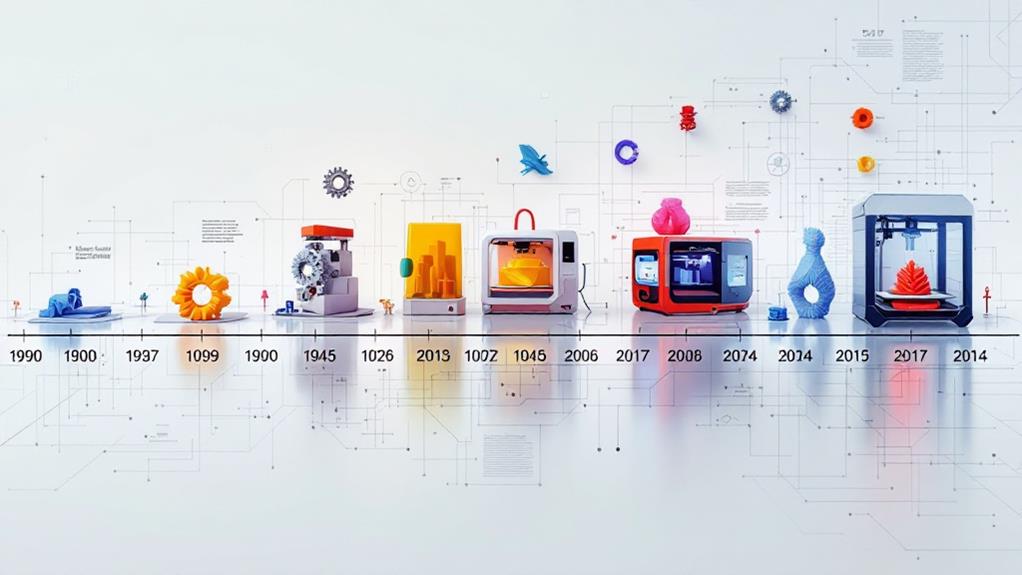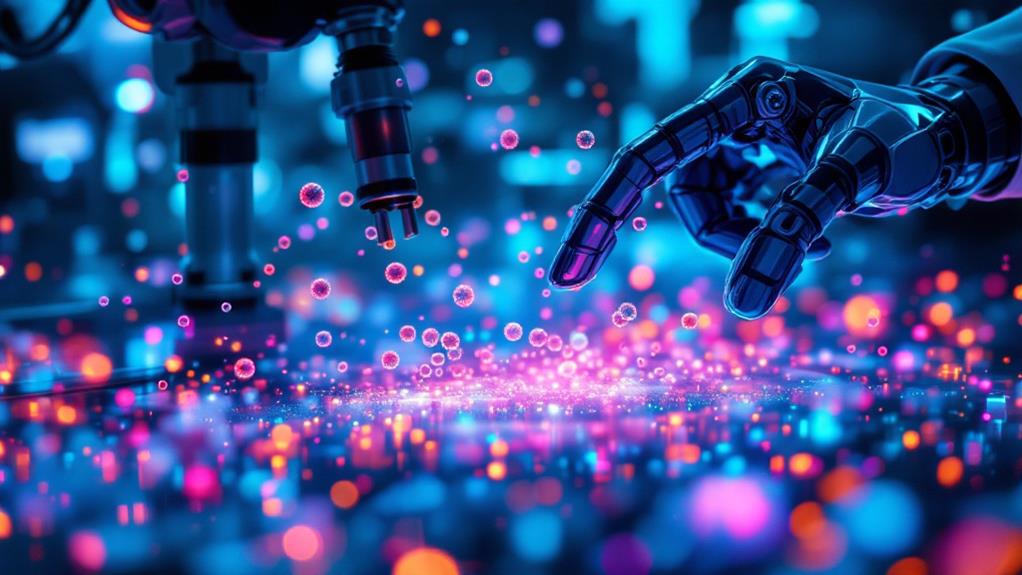Introduction to 3D Printing: The Future of Manufacturing
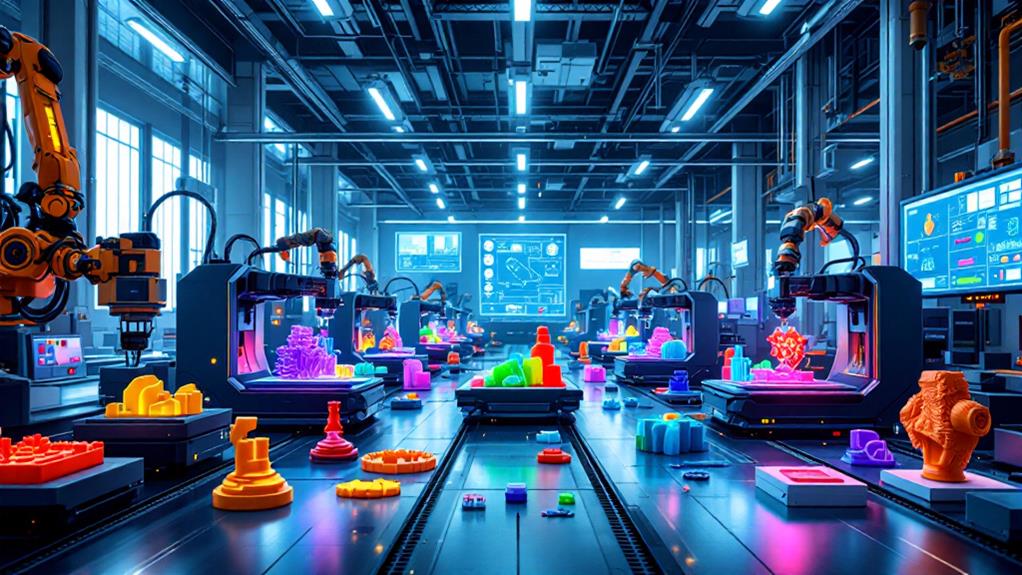
You're stepping into a new age of manufacturing with 3D printing, also known as additive manufacturing. Unlike traditional methods, it constructs items layer by layer, allowing for greater creativity and customization. This technology speeds up prototyping, slashes waste, and integrates seamlessly with digital workflows. With applications ranging from medical prosthetics to aerospace components, you're witnessing an industry transformation. Although initial costs and quality control pose challenges, the potential for innovation is immense. Seize the opportunity to see how 3D printing can revolutionize manufacturing processes and industry standards. There's more to reveal beyond these crucial advancements.
Understanding 3D Printing Technology
3D printing technology, often referred to as additive manufacturing, fundamentally changes how we think about creating objects. Instead of traditional methods that remove material, additive manufacturing builds objects layer by layer. This approach offers you incredible design freedom, enabling the creation of complex shapes that are difficult or impossible with conventional techniques. With digital fabrication, you can easily alter designs on a computer, allowing you to iterate and improve your creations rapidly.
One of the standout features of 3D printing is its prototyping speed. You can quickly bring ideas to life, test, and refine them in a fraction of the time it would take with traditional methods. This speed doesn't just accelerate development; it also opens up new customization options. Regardless of whether you're crafting bespoke jewelry or tailor-made medical implants, the ability to personalize products is unmatched.
Workflow integration is another advantage, as digital files can seamlessly move from design to production. The sustainability potential of 3D printing is promising, with reduced waste and the possibility of using eco-friendly materials. Finally, there are abundant educational resources available, making it easier than ever to learn and harness this transformative technology.
Advantages of 3D Printing
With the advent of 3D printing, you've got a tool that revolutionizes the way products are made, offering several distinct advantages over traditional manufacturing methods. One of the most significant benefits is cost savings. By eliminating the need for expensive molds and reducing material waste, 3D printing slashes production expenses. Plus, its design flexibility allows you to create complex geometries that are impossible with conventional techniques, opening up endless possibilities for innovation.
Rapid prototyping is another game-changer, as it lets you quickly iterate and refine your smart lighting designs. This speed improves development cycles and reduces time-to-market. Regarding sustainable manufacturing, 3D printing shines by using only the material necessary, minimizing waste, and lowering the carbon footprint.
Customized production is a breeze, enabling you to tailor products to specific needs without incurring the high costs associated with custom tooling. This capability leads to better supply chain optimization, reducing the need for large inventories and allowing for on-demand production.
In education applications, 3D printing inspires creativity and practical learning, while in artistic expression, it offers artists new mediums and methods to bring their visions to life. Utilize 3D printing's advantages and transform how you manufacture.
Key Applications in Industries
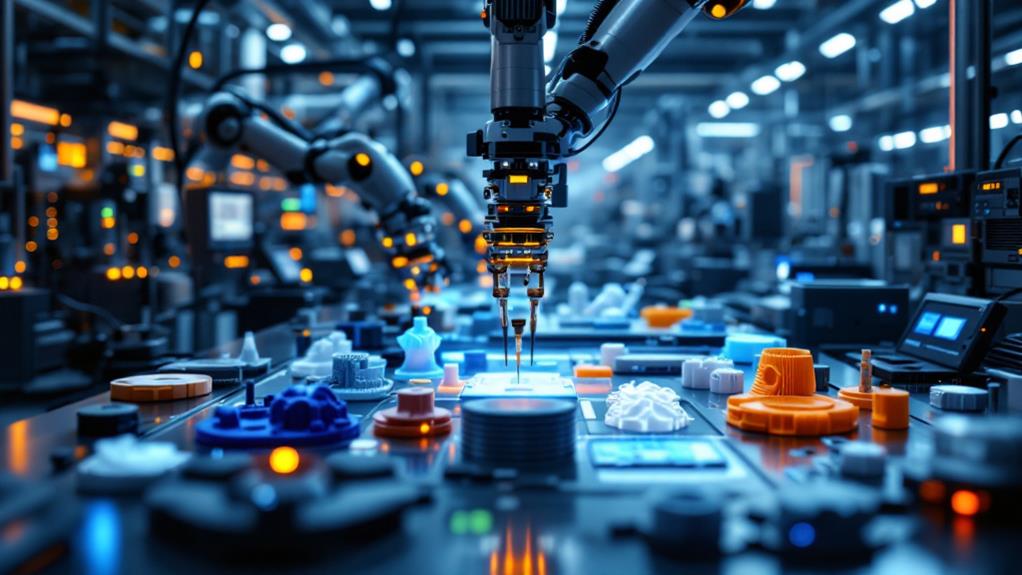
Across a variety of sectors, 3D printing has emerged as a crucial tool, reshaping industry landscapes and driving innovation. In the medical field, it offers groundbreaking solutions through custom prosthetics and implants, making medical applications truly life-changing. It also allows for precise aerospace components, reducing weight and increasing efficiency in aircraft design. If you're in the automotive industry, you'll find 3D printing invaluable for rapid prototyping, enabling you to test new models faster than ever before.
Consumer products benefit markedly, as manufacturers can create personalized items on demand, enhancing customer satisfaction. Architects use 3D printing to produce detailed architectural models, providing clients with tangible previews of projects. In educational settings, 3D printers serve as effective educational tools, bringing complex concepts to life and fostering creativity among students.
The world of fashion design and jewelry creation is not left behind, with designers embracing this technology to craft intricate, bespoke pieces that push the boundaries of traditional manufacturing. Regardless of whether you're an innovator in tech, healthcare, or design, 3D printing opens up new possibilities, allowing you to bring your most ambitious ideas to reality with unprecedented speed and precision.
Impact on Product Development
As industries continue to harness the transformative power of 3D printing, its influence on product development becomes increasingly apparent. You can engage in iterative design processes like never before. The era of waiting weeks for a prototype is over. With 3D printing, prototyping efficiency skyrockets, allowing you to quickly refine products based on user feedback. This agile approach leads to better products that align with market demands.
Imagine drastically reducing costs by minimizing material waste and streamlining production. 3D printing offers unparalleled cost reduction, enabling smaller production runs without breaking the bank. Plus, it opens up incredible customization potential, letting you tailor products to specific consumer needs. This flexibility can improve customer satisfaction and differentiate your brand in a crowded market.
Additionally, 3D printing can revolutionize your supply chain. By localizing production, you can respond faster to market shifts and reduce reliance on complex logistics networks. The increased production speed means you can rapidly test new ideas and respond to market changes with agility. Fundamentally, 3D printing empowers you to create more groundbreaking products, optimize efficiency, and stay ahead of the competition in a dynamic marketplace.
Innovations in Material Usage
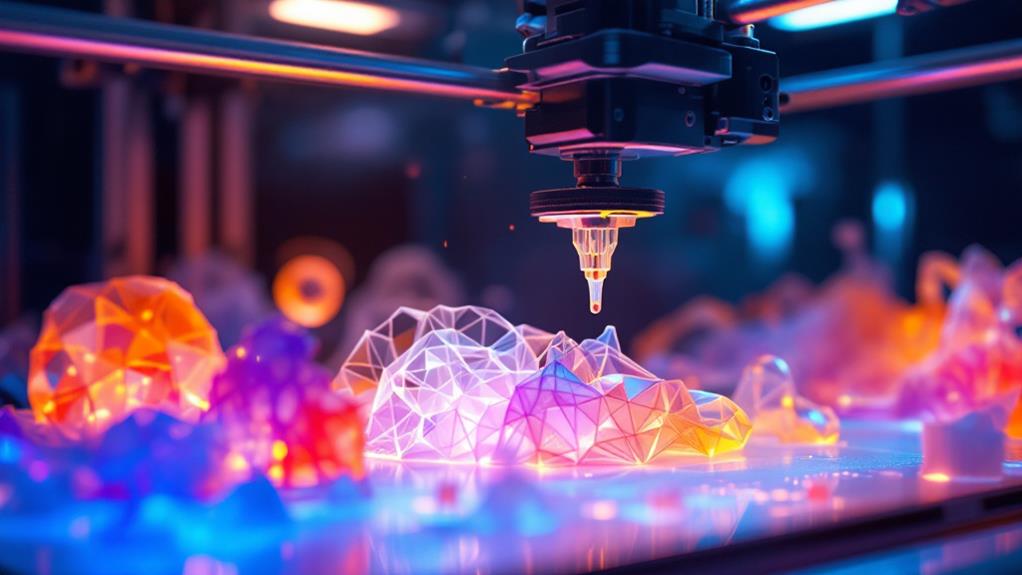
3D printing is driving unprecedented advancements in material usage, transforming what's possible in manufacturing. You can now investigate biomimetic materials that mimic nature's designs, offering stronger and more efficient structures. These materials inspire designs that were previously unimaginable, enabling you to create products that are not only functional but also sustainable.
With sustainable composites, you're combining materials like recycled plastics and natural fibers, reducing environmental impact while maintaining performance. Metal alloys in 3D printing allow for lightweight, durable parts essential in industries like aerospace and automotive. Imagine crafting complex components without the weight penalty of traditional materials.
Smart plastics are another game-changer, providing you with materials that adapt to environmental changes, enhancing product functionality. Bio-based filaments, derived from renewable sources, offer an eco-friendly alternative to conventional plastics, reducing reliance on fossil fuels.
Ceramics advancements let you produce heat-resistant components for high-temperature applications, expanding your design possibilities. Flexible structures, made possible by cutting-edge materials, enable dynamic, adaptable products for diverse uses. By incorporating recycled materials, you're closing the loop in manufacturing, promoting a circular economy. These advancements empower you to revolutionize how products are designed and manufactured.
Challenges and Limitations
While the innovations in material usage have opened exciting new avenues in 3D printing, there are still challenges that you must navigate. One major concern is intellectual property. With the ease of digital file sharing, protecting designs can be tough, risking unauthorized reproductions. You'll need to stay vigilant about enforcing IP rights to safeguard your creations.
Environmental concerns also play a significant role. The materials used in 3D printing are not always eco-friendly, and the process can generate waste. As you adopt this technology, consider the environmental impact and investigate sustainable practices.
Quality control presents another hurdle. Achieving consistent results can be tricky, especially with complex designs. It's essential to implement rigorous checks to guarantee your products meet high standards.
Production speed and cost efficiency are often in tension. While 3D printing offers rapid prototyping, scaling up to mass production can be slower and more expensive than traditional methods. You'll have to weigh these factors carefully to maintain competitiveness.
Design complexity adds to the challenge. While 3D printing allows intricate designs, translating them from concept to reality requires skill and precision. Mastering this will be key to revealing the full potential of 3D printing.
Future Prospects and Trends
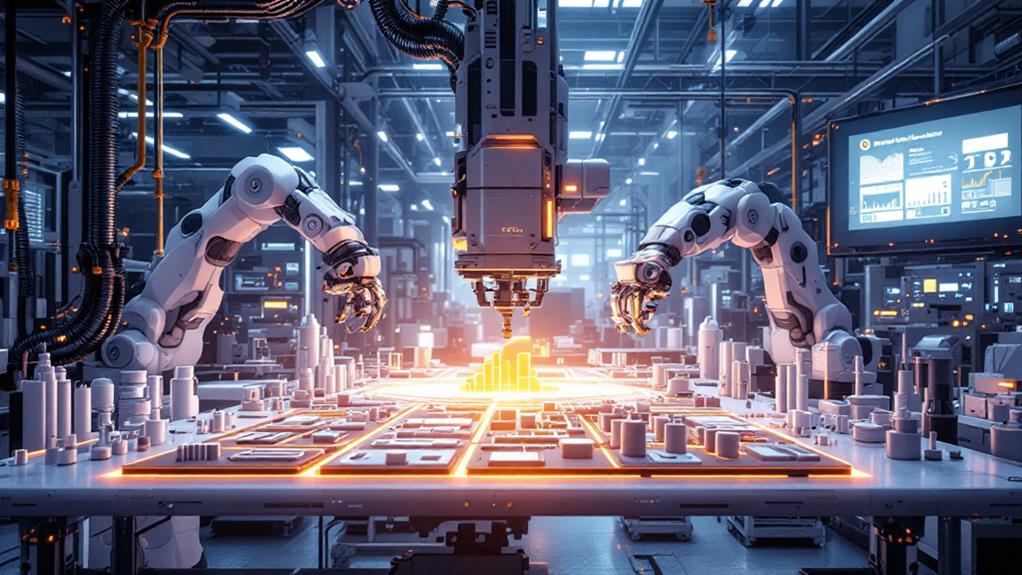
The horizon for 3D printing glimmers with potential as technological advancements continue to unfold. You're witnessing a transformation in manufacturing that prioritizes sustainability practices. Additive manufacturing reduces waste by using only the necessary materials, contrasting with traditional methods that often result in considerable surplus. As industries become more environmentally conscious, 3D printing aligns perfectly with these needs, offering a greener alternative.
Market growth is another exciting aspect. The 3D printing industry is expected to expand greatly, driven by increasing demand across diverse sectors like healthcare, aerospace, and automotive. You're likely to see more industries adopting 3D printing to streamline operations, cut costs, and improve product customization. This growth isn't just limited to large enterprises; small businesses and startups are also harnessing the power of 3D printing to innovate and compete.
In the future, you might witness even more integration of 3D printing in educational settings, enabling students to turn ideas into tangible projects. With continued advancements in materials and technology, the possibilities are limitless. As you look to the future, 3D printing promises to reshape how you think about manufacturing and sustainability.

